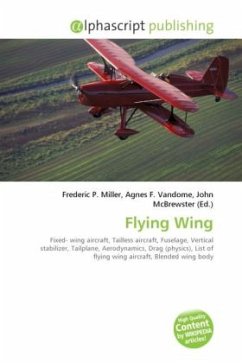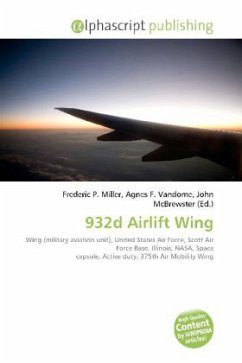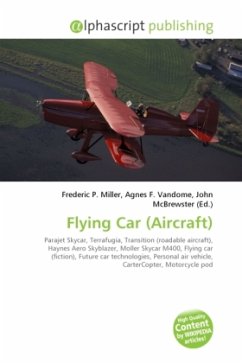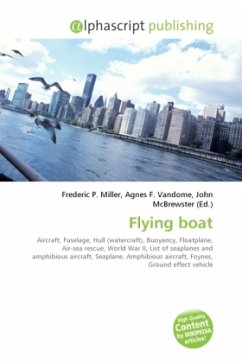
Flying Wing
Versandkostenfrei!
Versandfertig in 6-10 Tagen
22,99 €
inkl. MwSt.

PAYBACK Punkte
11 °P sammeln!
A flying wing is a tailless fixed-wing aircraft which has no definite fuselage, with most of the crew, payload and equipment being housed inside the main wing structure. A flying wing may have various small protuberances such as pods, nacelles, blisters, booms, vertical stabilisers (tail fins), or undercarriage. Some aircraft have no fuselage but do have a separate horizontal stabiliser surface mounted on one or more booms; these are also commonly referred to as flying wings, although this is not strictly correct. An example of such a design is the Northrop X216H. Theoretically the flying wing...
A flying wing is a tailless fixed-wing aircraft which has no definite fuselage, with most of the crew, payload and equipment being housed inside the main wing structure. A flying wing may have various small protuberances such as pods, nacelles, blisters, booms, vertical stabilisers (tail fins), or undercarriage. Some aircraft have no fuselage but do have a separate horizontal stabiliser surface mounted on one or more booms; these are also commonly referred to as flying wings, although this is not strictly correct. An example of such a design is the Northrop X216H. Theoretically the flying wing is the most efficient aircraft configuration from the point of view of aerodynamics and structural weight. It is argued that the absence of any aircraft components other than the wing should naturally provide these benefits. However in practice an aircraft's wing must provide for flight stability and control; this imposes additional constraints on the aircraft design problem. Therefore, theexpected gains in weight and drag reduction may be partially or wholly negated due to design compromises needed to provide stability and control.












